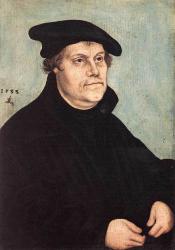Representative text cannot be shown for this hymn due to copyright.
Translator (Polish): Edward Romański
(no biographical information available about Edward Romański.)
Go to person page >Translator (German): Martin Luther

Luther, Martin, born at Eisleben, Nov. 10, 1483; entered the University of Erfurt, 1501 (B.A. 1502, M.A.. 1503); became an Augustinian monk, 1505; ordained priest, 1507; appointed Professor at the University of Wittenberg, 1508, and in 1512 D.D.; published his 95 Theses, 1517; and burnt the Papal Bull which had condemned them, 1520; attended the Diet of Worms, 1521; translated the Bible into German, 1521-34; and died at Eisleben, Feb. 18, 1546. The details of his life and of his work as a reformer are accessible to English readers in a great variety of forms. Luther had a huge influence on German hymnody.
i. Hymn Books.
1. Ellich cristlich lider Lobgesang un Psalm. Wittenberg, 1524. [Hamburg Library.] This contains 8 German h…
Go to person page >Author: Wipo
Wipo (Wippo or Wigbert), a native of Burgundy, chaplain ot Emperor conrad IIl, A. D. 1000, Authroship is claimed for him, but not definitely estabished.
Evangelical Lutheran Hymnal, 1908
Go to person page >Tune
CHRIST LAG IN TODESBANDENCHRIST LAG IN TODESBANDEN is an adaptation of a medieval chant used for "Victimae Paschali laudes" (the same chant is the source for CHRIST IST ERSTANDEN, 407). The tune's arrangement is credited to Johann Walther (b. Kahla, Thuringia, Germany, 1496: d. Torgau, Germany, 1570), in whose 1524 Geystlic…
Go to tune page >


 My Starred Hymns
My Starred Hymns





